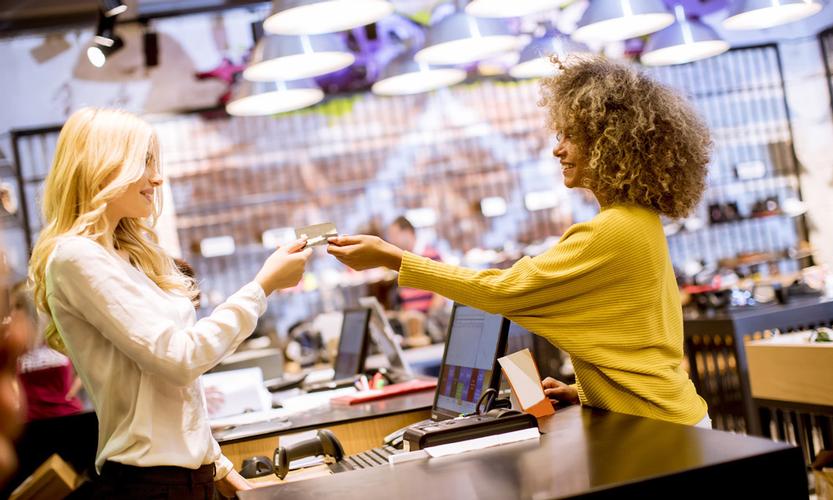No Surprises
Imagine your customer, scrolling away somewhere, adding your product to their basket. They like your product, and they want the payment part to be as bloodless as possible – over in seconds. But then, as they delve into checkout, they are forced to create an account, to join your mailing list, before they are able to continue. This puts a lot of people off. Remember, short attention spans are rife. The sudden request that they enter more personal data is enough to switch people off rather quickly. I know I’ve abandoned a cart for this exact reason before.
So, to keep your customer moving nicely through checkout, why not give them the option to continue as a guest, allowing them to move ahead with their purchase by simply clicking the ‘Continue as Guest’ option or, at worse, maybe entering an email. In similar fashion, any potentially nasty surprises – shipping costs, payment options, taxes, etc. – should be outlined as early as possible, rather than when the customer is about to hit the payment section.
Multiple Payment Options
When it comes to the question of payment, there must be a real sense of trust. Any sliver of doubt will lead to the customer clicking away. That is why you must produce an ecommerce website design that allows for multiple payment option. All major online shops allow for – obviously – credit card and debit card, but this isn’t enough. You must also insert PayPal as an alternative, easier way of making payment. And if you want to provide the option of Apple Pay, too, then that cannot hurt either. These options immediately make your website look professional.
Optimise for Mobile
At the start of this piece, I noted that around 70% of carts are abandoned. Well, for mobiles, that figure rises to a staggering 85%. And given that more and more people are using mobile over desktop to complete online purchases, it makes sense to ensure that your checkout process is perfectly streamlined for mobile. In fact, your mobile experience has to take precedence over desktop.
To do this, keep the layout simple and fast. Buttons have to be extremely clear. A progress bar at the top, giving the user visual reference for where they are in your website, also goes down rather well. And if you have any forms that the customer has to navigate, either remove them entirely or, if that isn’t possible, make them as simple as possible. For further tips on optimising for mobile, take a look at this piece.
Prove That Security Matters
When it comes to online transactions, you have to remember that the customer is parting with their money before the physical thing has been received, much like many shady transactions committed by shady individuals the world over. You can understand why there is a real need for trust, for the customer to know that your ecommerce website design is secure. The first step in doing this, of course, is SSL certification – the little padlock button that sits in the top left-hand corner. Without this, you are toast, no more trustworthy than a carpark exchange of amphetamine products.
Multiple payment options, as mentioned, are also important for building trust. But to ensure that you tick every imaginable box, you need to go a step further. A customer needs unequivocal visual assurance that you are certified by a quality security provider. To do this, display a well-known security badge such as McAfee Secure inside the checkout process, next to the multiple payment options. This almost universal symbol of online safety will, usually, satisfy the customer.
Speed
Isn’t it quite concerning that, most of the time, we will click away to somewhere else if something doesn’t load immediately? Even half a second – maybe less, depending on one’s mood – of delay is enough to inspire hatred and fear inside the heart of a smartphone user. I’ve seen phones get hurled across a room for taking too long. Technology may have evolved society, but as far as I’m concerned, it has also made us truly contemptible, feral creatures.
Anyway, speed. Speed is important. Very important. Especially in the checkout process for an online shop. Slow-loading pages, particularly in the payment stage, could make the customer worry that something has gone terribly wrong. You should double check that every link in your website – anything that is clickable – doesn’t end up in an Error 404, and that every link is optimised for speed. It may seem like an obvious thing to say, but even one minor problem in the speed department is likely to be a major turnoff.
Do you own an E-commerce website but feel like you are not getting the most out of the tools at your disposal? Feeling a bit confused over some features? If so, don't worry - we've got you covered all the way.
DotGO doesn't just offer brilliant E-commerce website design tools; we also provide an extensive range of easy-to-follow, straight-to-the-point support videos that run you through everything you need to know. Whether you want to set up a professional email on your phone or add a downloadable product to your store, we have videos that run through the process, step by step.
Make sure you don't miss out on the amazing tools at your disposal. Take a look at our list of support videos and unleash the full potential of your online shop in no time.

